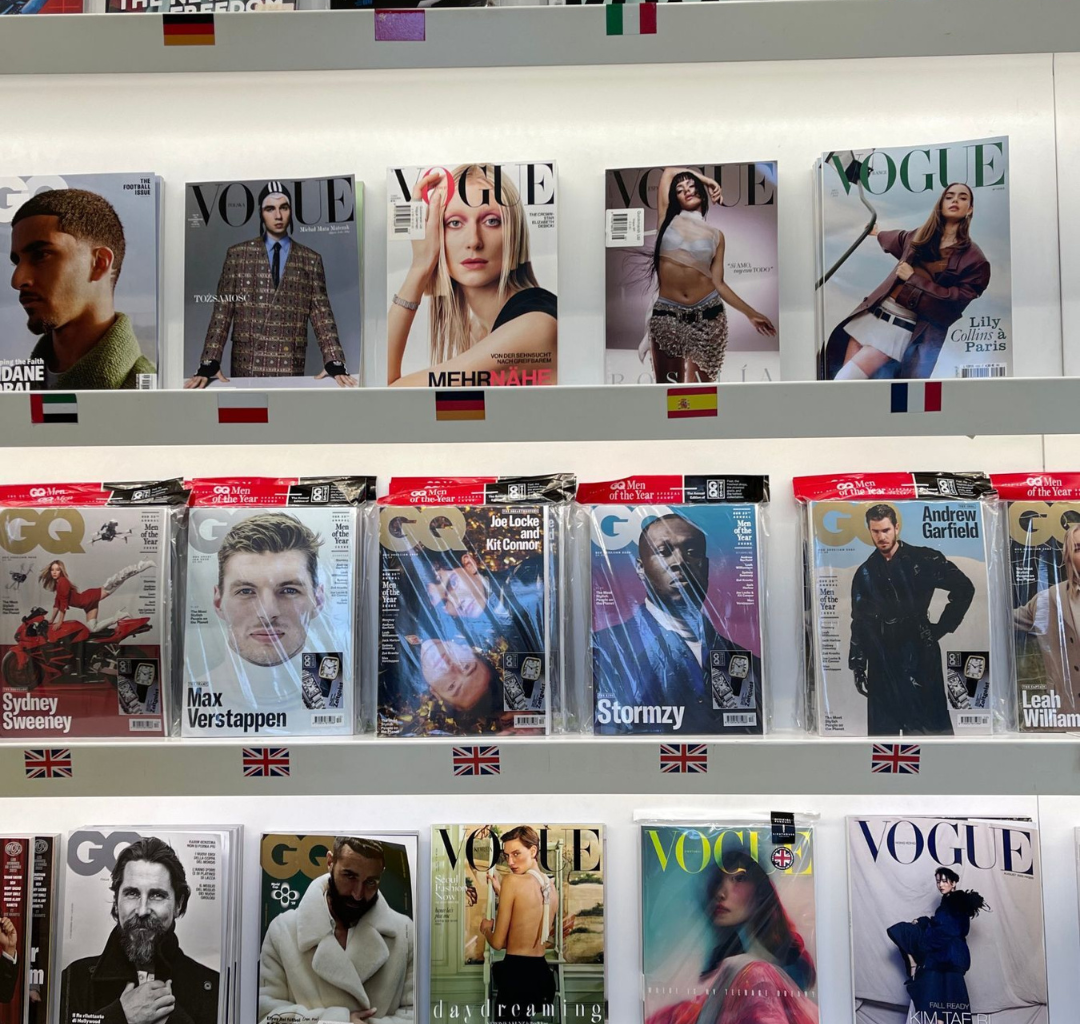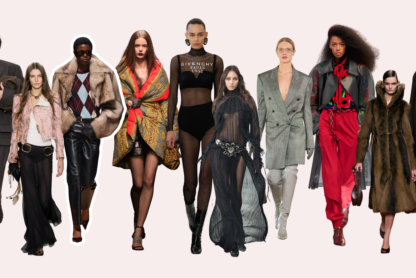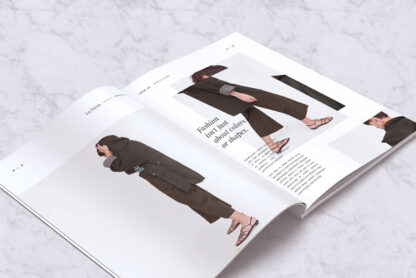Reading magazines is a big part of every fashion enthusiast’s life. Every week or month, we rush to the nearest store or wait for our long-awaited issue to arrive straight to our mailbox to discover what has been happening in the fashion world recently.
We all have our favorite magazine: Vogue, Harper’s Bazaar, Elle, Marie Claire, Glamour…but how much do you know about how they came to life and what topics they used to cover before? Each of them impacted women’s lives and fashion journalism. But actually, the history of fashion magazines begins way before, back in the 17 century. Curious to learn about it? Let’s begin then and learn about the history and evolution of fashion magazines. (P.S Towards the end of this article, you’ll also learn how magazines operate nowadays and how the editorial world evolved)
The History And Evolution Of Fashion Magazines
THE HISTORY OF FASHION MAGAZINES
The Treasure Hidden Secrets
The invention of the magazine can be traced back to the late 1600s. Under the name “The Treasure Hidden Secrets”, the ‘honest matrons and virtuous virgins’ received information on acute occurrences of the Elizabethan age, such as the plague. During the reign of Queen Anne, this content shifted to women’s diaries, gazelles, or pocket pamphlets with a female-centric audience. The publications were the pioneers in creating an educational reader community and enabled exchange.
Under Louis XIV of France, magazines started featuring illustrated fashion sketches of pieces usually worn by aristocrats of the time, portraying the nobility, serving inspiration, and giving directions to dressmakers.
Le Mercure Galant
The first publication that is considered to have reported about the fashion industry is Le Mercure Galant. Founded by the writer Jean Donneau de Visé in 1672, the literary gazette played a pivotal role in the dissemination of news about fashion, luxury goods, etiquette and court life under Louis XIV to the provinces and abroad.
The Gentleman’s Magazine
In the 18th century, The Gentleman’s Magazine was introduced in 1731 in London by Edward Cave. It was England’s first general-interest magazine and covered essays and articles pulled from other publications, often from books and pamphlets. It was actually the first to use the term “magazine” (from the French it means “storehouse”) for a periodical. And it ran uninterrupted for almost 200 years, until 1922.
Harper’s Bazaar
The 19th century saw the birth of three major notorious publications. On November 2, 1867 Harper & Brothers, a New York–based publishing firm run by siblings James, John, Joseph Wesley, and Fletcher Harper launched the first issue of Harper’s Bazaar. “A repository of fashion, pleasure, and instruction” is how the magazine described itself on the cover. It was one of the first publications dedicated to looking at women’s lives through the lens of fashion. In addition, Harper’s Bazaar wrote about social etiquette, and politics, as well as music, fiction, and poetry. It also covered articles about the importance of work and education for women, and even endorsed women’s suffrage effort.
Cosmopolitan
The first issue of Cosmopolitan was published in New York City in March 1886 by Schlicht & Field as “The Cosmopolitan”, and originally began as a “first-class family magazine”, with “a department devoted exclusively to the concerns of women, with articles on fashions, on household decoration, on cooking, and the care and management of children, etc.”
American Vogue
Some years later, on December 17, 1892, the first issue of American Vogue discovered the light of the day. Founded by Arthur Baldwin Turnure, an American businessman, the weekly newspaper celebrated the “ceremonial side of life”. From its inception, the magazine targeted the New York upper class, their habits, leisure activities, places they frequented, and the clothing they wore. At the time, it was primarily concerned with fashion, social etiquette, and traditions of high society. And with coverage of sports and social affairs included for its male readership. In short, Vogue was a lifestyle magazine for the wealthy.
From then on, the fashion magazine continued to serve more and more as a tool to draw inspiration from – an escapism from the daily rhythm, an unusual perspective on the conventional. Alexandra Shulman, former Editor-in-Chief of British Vogue told BBC Radio 2 in 2014: “People don’t want to buy a magazine like ‘Vogue’ to see what they see when they look in the mirror. They can do that for free.” She pointed out that women buy magazines like ‘Vogue’ for escapism: “I think ‘Vogue’ is a magazine that’s all about fantasy to some extent and dreams, and an escape from real life.“
The Ladies World
Another important magazine of the time to know, although it disappeared in 1918, is “The Ladies World”. Launched by Cassell and Co. in October 1886, the Victorian magazine wrote about fashion and trends among high society. Under Oscar Wilde’s editorship between 1888 and 1889, the title changed to “The Woman’s World” who described it as “the first social magazine for women”. Besides short fiction and poetry, It covered topics like education and politics. Although originally it targeted an élite readership, “The Woman’s World” expanded its audience to middle-class women.
L’Officiel
The 20th century saw the birth of several publications that became leading voices in the fashion media sector and still remain strong players today. L’Officiel was launched in 1921 as a professional trade magazine. As it was the official publication of the Chambre Syndicale de la Couture Parisienne, a trade body representing all Parisian couturiers. The publication was directed principally at international buyers of luxury fashion, designers, and commision agents.
Marie Claire
Marie Claire was founded in France on March 5th, 1937. It is considered to be the first modern women’s fashion magazine, much ahead of its time. Not only it covered fashion and beauty, but it also wrote on topics that at the time were considered serious and provocative. It appealed to a diverse female readership – both to women of all ages and positions in society. After temporarily ceasing its operations during World War II, the magazine relaunched in October 1954.
Glamour
Glamour was first published in the United States in April 1939. It was then called “Glamour of Hollywood”, as it was a high-end, glossy magazine focused on the lives of Hollywood celebrities. However, in 1943, the publication changed its name to “Glamour” with the subtitle “for the girl with a job”. Besides celebrities, it began including more articles on fashion, beauty, and then later psychology, health, and wellbeing.
Elle
Elle magazine was founded by Hélène Gordon-Lazareff, and the first issue appeared on November 21st, 1945. It focused on fashion, beauty, and lifestyle, but it also had another mission. Since the magazine was born the year after French women gained the right to vote, naturally, it aimed to empower women, encourage them to study and work. And inspire them to live their best lives while making a contribution to the world. “Irony in seriousness and seriousness in frivolity” was the magazine’s foundation.
These were the most iconic magazines between the 17th and the 20th century.
HOW DO FASHION MAGAZINES OPERATE?
We all got the scene of The Devil Wears Prada in mind, in which Nigel tells Andy about his childhood nights under a blanket reading a fashion magazine. Opening magazines would be like opening a door giving one access to a magic, different world. “This is not just a magazine. This is a shining beacon of hope for a young boy growing up in Rhode Island with six brothers pretending to go to soccer practice when he was going to sewing class and reading Runway under the covers at night with a flashlight. You have no idea how many legends have walked these halls.”
Indeed. Magazines represent a teleportation tool, taking one to distinct spheres without having to leave the bedroom. It is the smell of freshly printed paper, the haptic, the excitement one feels when picking up a monthly issue of our favorite magazine. Not necessarily would one think about the effort feeding into the magazine creation process. The behind-the-scenes. Those who choose to transform their enthusiasm into a full-time profession quickly become aware that it requires commitment, focus, and industry awareness but also industry contacts, access, and knowledge. But how does a fashion magazine nowadays operate and what positions are being necessary to assemble an issue, print or digital?
A fashion magazine can be compared to a kingdom with its hierarchy. The Queen or King is equated with the President/ Publisher.
Magazine Publisher
A Magazine Publisher is the individual conclusively responsible for construing a magazine’s reputation and ensuring its success. While the publisher might delegate day-to-day tasks to magazine employees, he/she is entangled in the business elements of running the magazine.
Editor-in-Chief
On top of the hierarchy chain of a magazine, there is the Editor-in-Chief who has a range of diverse responsibilities. From determining the visual appearance and haptic of the publication; invoking the publication’s team of editors, copyeditors; coordinating publishing guidelines (framing tone and content) and creating an editorial board (issue outline and content mapping); reviewing content (proof-reading articles and delegating issues to editors or writers); managing budgets or representing the publication.
Managing Editor
Coming right after the E-i-C is the role of the managing editor who oversees the day-to-day processes of the publication and reports to the editor-in-chief. A significant part of the office-based role includes hiring associate and assistant editors, managing their work engagements, proposing concepts, drafting articles, addressing obstacles, or communicating with department editors.
Editors, Graphic Designers, & Digital Managers
On the base of the hierarchy pyramid follow the editors. From section editor, design editor, or copy editor to online editor. They create the content for the web and print magazine, hold content consultations with the editorial teams, manage incoming stories and press releases, and keep track of industry events and content schedules. Graphic designers and digital managers share the level with the editors, as they operate on the interior magazine ring, creating visuals for the online and print editions, holding up the general reader engagement and attraction.
These roles are supported by assistants and interns, whose job is to make it easier for the upper leagues.
Freelancer Stylists, Photographers, and Writers
Freelancer stylists, photographers, and writers LINK are the outer influences. Essential for the contribution to a well-running magazine, yet not employed by the company. They work on projects, shoots, or new stories and advance perspectives and personality to the publication – often adjusted to the magazine’s reputation and audience.
On a daily basis, these roles work together intrinsically; the head reaches down to its aides.
Press releases, stories, and requests reach the editors daily. Whether or not to accept them and transfer them to one of the editors or freelance writers is dependent on the content guidelines or has to be discussed with the Head of Content or Managing Director of the magazine. Submissions have to be proofread and content uploaded to the website, referring to the editorial schedule. For each article published, the editor and visual editor work together. Adjusting text to image, thriving to work with material that has not been utilized from other publications before. Editors assemble articles, visit press events and work on upcoming print issues with the Editor-in-Chief.
It is a never pausing wheel of content meetings, scheduling updates, interior consultations, and creative challenges, all running under time pressure. Yet can it be a satisfying commitment as everyone pulls at the same string, gives creative input. And, piece by piece, works themselves up an imaginary career ladder.
In this article, we explain more about the different roles inside a fashion magazine.
THE EVOLUTION OF FASHION MAGAZINES
As technology continues to evolve, the fashion media landscape has shifted its focus from solely publishing print magazines to expanding their audiences through the utilization of the digital tool. The invention of the world wide web in the early 1990s signaled a transformation for many aspects of life. And fashion journalism was not exempt. Not only journalists but members of society wanted to have something to say and contribute to the journalistic world through blogs and vlogs, helping them gain a large readership while not having to invest in printing costs and material costs.
Traditional fashion publications commenced to adapt to the digital development in the 2000s, resulting in the introduction of digital subscriptions. Magazines delivered written and visual content each week or month directly to the reader’s electronic device. This immediate information traffic intensified the industry workload and pace. Yet led to an expansion in readers, staff, projects, and attention.
Today pictures and videos seem to attract a majority of followers on social media. Instagram and Tik Tok being the most popular. Photography first, journalism second. It is about quickly interacting with the online audience, passing value on through easily comprehensible and accessible content. With over one billion monthly active users, Instagram is not a platform influencing through imagery. But it serves to enhance the user traffic on magazine websites through links, posts, and stories. Good journalism will stay essential, whether online or offline. But what will generally happen to print magazines, when digital sources are out-beating them?
What Fashion Magazines Are Still In Print
Over the past years, many publications have ceased print issues or reduced their physical magazine presence due to consumer shift to digital and social media. Even Vogue, arguably the world’s top fashion publication, announced in January this year that it would reduce print to 10 issues per year. Likewise, in February 2022, Cosmopolitan decided to switch to 8 issues per year. Instyle US’ last print issue was published in April 2022. And Marie Claire UK stopped releasing Marie Claire in November 2019, followed by Marie Claire US in summer 2021.
Despite the progressive partial or total switch to digital, many iconic fashion magazines kept their print editions. And continue to grace bookshelves and night tables of print magazine lovers.
Do you dream of getting your article published at these iconic magazines one day? If you are an aspiring fashion journalist but don’t have any experience and don’t know where to start, our Fashion Writer Accelerator course is made for you! Check it out here.








